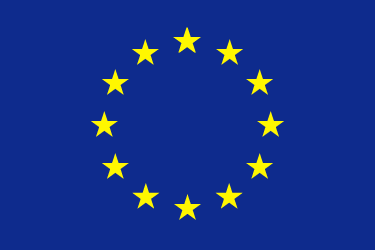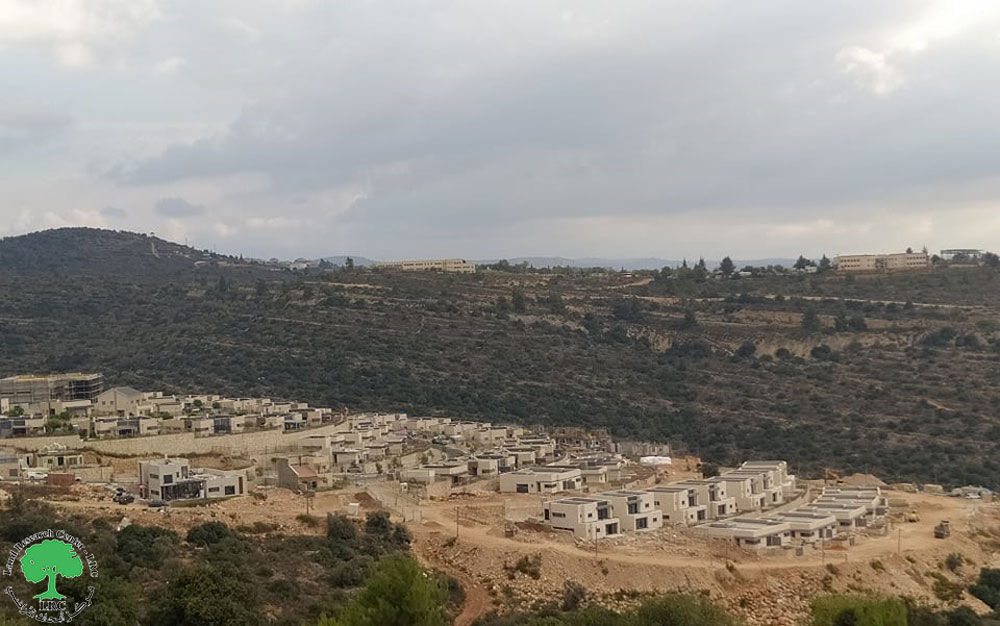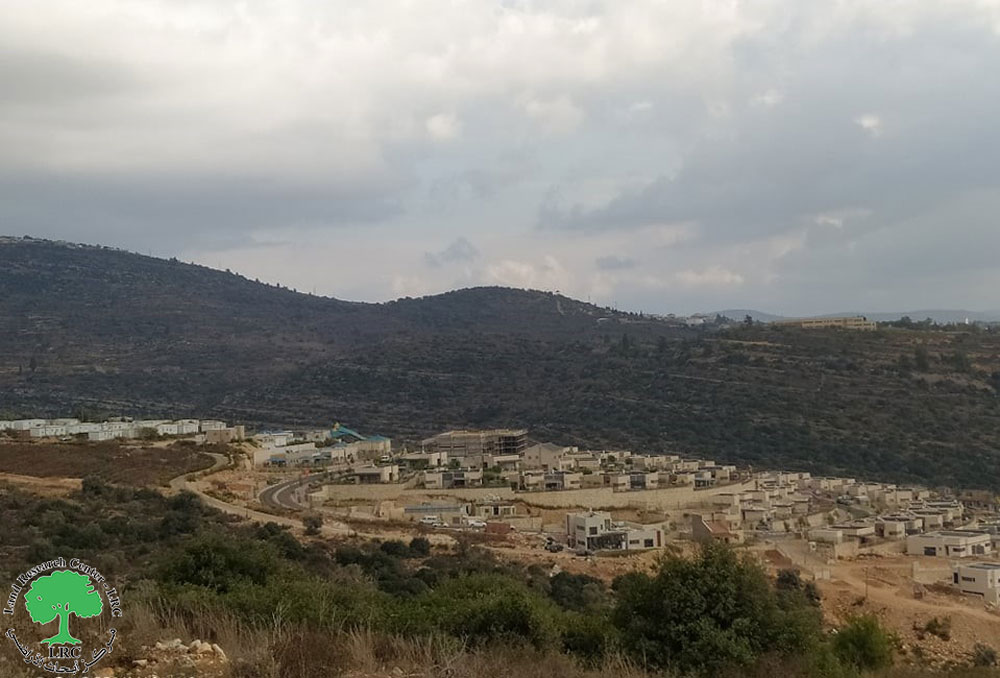2021-10-04
إغلاق طريق زراعي وتوسعة مستعمرة " كيرم عيلم“على أراضي المزرعة الغربية بمحافظة رام الله
- الانتهاك: إغلاق طريق زراعية ببوابة حديدية وتوسعة مستعمرة “كيرم عليم".
- الموقع: المزرعة الغربية / محافظة رام الله.
- تاريخ الانتهاك:04/10/2021م.
- الجهة المعتدية: جيش الاحتلال الإسرائيلي.
- الجهة المتضررة: المزارعون من قرية المزرعة الغربية.
تفاصيل الانتهاك:
أقدم جيش الاحتلال الإسرائيلي يوم الاثنين الموافق 04 تشرين الأول 2021، على نصب بوابة حديدية على مدخل طريق زراعي يؤدي إلى المنطقة الشمالية الغربية" موقع " الصوانة" و" ام طوخ" و" باطن الطايرة" " من بلدة المزرعة الغربية.
لا بد من ذكره بأنه الطريق الزراعي تؤدي إلى أراضي البلدة والمشجرة بالزيتون والتي تبلغ مساحتها ما يزيد عن 1400 دونم، وإضافة إلى أن الهدف الأساسي من هذا الإغلاق هو منع استعمال المركبات الفلسطينية الشخصية أو حتى الماكينات الزراعية من الوصول إلى تلك المواقع والتي تعتبر في الوقت ذاته قريبة من مستعمرة " كيرم عيلم" الجاثمة على أراضي البلدة، علماً بأن تلك المنطقة لا تحتاج إلى تنسيق مسبق للدخول لها.
هذا وأفاد المزارع يوسف لدادوة أحد المتضررين لباحث مركز أبحاث الأراضي بالتالي:
" قبل إقامة مستعمرة "كيرم عيلم" على أراضي البلدة قبل 15عاماً كانت الأراضي الزراعية غرب البلدة لديها عدة امتيازات منها كثرة التنوع البيئي الفريد فيها، وبعد إنشاء المستعمرة تبدل هذا الحال حيث قام المستعمرون بشق طرق زراعية وتم تغيير معالم المنطقة ككل، ومنع المزارعين أيضاً من الوصول إلى أراضيهم وفلاحتها، وتم إغلاق الطريق عبر البوابة الحديدية لفرض قيود صارمة تمنع أي تسهيلات للوصول إلى الأراضي الزراعية والتي سوف تتضرر بشكل أكبر جراء هذا الاعتداء".
إغلاق الطريق الزراعي له أضرار سلبية على القطاع الزراعي خاصة أن معظم المزارعين في البلدة يمتلكون أراضي زراعية ويفلحونها باستمرار وبإغلاق الطريق سوف تكون هناك صعوبة بالغة في خدمة الأرض كما يجب والاعتناء بها بالشكل الأمثل.
البوابة التي وضعها الاحتلال
توسعة مستعمرة " كيرم عيلم".
أثناء الجولة الميدانية لفريق البحث الميداني في مركز أبحاث الأراضي في الموقع تم رصد توسعة في مستعمرة " كيرم عليم" فمن الجهة الغربية للمستعمرة يتم بناء 29 وحدة سكنية جديدة، ومن الناحية الشرقية وضع ما يزيد عن 17 وحدة سكنية متنقلة، بالإضافة إلى تجريف الأراضي بشكل متواصل.
مشاهد من عملية التوسع الاستعماري لمستعمرة "كيرم عيلم" على أراضي المزرعة الغربية
نبذة عن بلدة المَزْرَعَةالقِبْلِيَّة – الغربية:
تقع بلدة المزرعة الغربية على بعد 12كم من الجهة الشمالية الغربية من مدينة رام الله، ويحدها من الشمال قرية أبو شخيدم، ومن الغرب تحاصرها مستعمرة “تلمون” المقامة على أراضيها، ومن الشرق قرية أبو قش، ومن الجنوب قرية عين قينيا. هذا ويبلغ عدد سكانها 5180 نسمة حتى عام 2017م، كما تبلغ مساحتها الإجمالية 15,275 دونم منها 1165 دونم عبارة عن مسطح بناء للقرية. ;كما صادر الاحتلال من أراضيها ما مساحته 329 دونماً لصالح مستعمرتي “نحلئيل” التي تأسست عام 1984م ونهبت 13 دونماً من أراضيها، إضافة إلى مستعمرة “تلمون” التي تأسست عام 1989م وصادرت من القرية 241 دونماً. كذلك الطريق الالتفافي رقم 450 نهب من أراضي القرية أكثر من 75 دونماً.
هذا وصنفت أراضي القرية حسب اتفاق أوسلو إلى :
مناطق مصنفة (ب) مساحتها 8533 دونماً.
مناطق مصنفة (ج) مساحتها 6742 دونماً.
يرى مركز أبحاث الأراضي في عملية بناء وتوسع المستوطنات الإسرائيلية على أراضي الضفة الغربية بأنها مخالف لكافة المواثيق والقوانين الدولية ومنها قرارات الجمعية العامة للأمم المتحدة وقرارات مجلس الأمن الدولي وهي:
قرار الجمعية العامة للأمم المتحدة بتاريخ 20/12/1972، والذي طالبت فيه إسرائيل الكف عن عدد من الإجراءات والممارسات، منها (بناء مستوطنات إسرائيلية في الأراضي العربية المحتلة ونقل بعض السكان المدنيين من إسرائيل إلى الأراضي العربية المحتلة).
قرار الجمعية العامة للأمم المتحدة بتاريخ 15/12/1972، الذي طلبت فيه الجمعية العامة من إسرائيل أن تكف عن ضم أي جزء من الأراضي العربية المحتلة وتأسيس مستوطنات في تلك الأراضي، ونقل السكان إليها.
قرار الجمعية العامة للأمم المتحدة بتاريخ 7/12/1973، الذي أعربت فيه الجمعية العامة عن القلق البالغ لخرق إسرائيل لأحكام اتفاقية جنيف الرابعة لعام 1949 وجميع الإجراءات التي اتخذتها إسرائيل لتغيير معالم الأراضي المحتلة أو تركيبها السكاني واعتبرتها انتهاكا للقانون الدولي.
قرار الجمعية العامة بتاريخ 29/11/1974 الذي أعربت فيه الجمعية العامة عن أشد القلق من ضم إسرائيل لبعض أجزاء الأراضي المحتلة وإنشاء المستوطنات ونقل السكان إليها.
قرار الجمعية العامة للأمم المتحدة بتاريخ 15/12/1975، والمكون من أربعة أقسام، وقد دانت في القسم الأول جميع الإجراءات التي تمارسها إسرائيل في الأراضي المحتلة، واصفة تلك الممارسات بأنها تشكل انتهاكات خطيرة لميثاق الأمم المتحدة وعائقا أمام إقرار سلام دائم وعادل في المنطقة، مؤكدة أن هذه الإجراءات تعتبر لاغية وباطلة، وليس لها أساس من الشرعية.
قرار الجمعية العامة الصادر في 28/10/1977، الذي أكد في البند الأول منه على أن جميع التدابير والإجراءات التي اتخذتها إسرائيل في الأراضي الفلسطينية وغيرها من الأراضي العربية المحتلة منذ عام 1967 لا صحة لها قانونا، وتعد عرقلة خطيرة للمساعي المبذولة للتوصل إلى سلام عادل ودائم في الشرق الأوسط، كما تأسف الجمعية العامة بشدة لاستمرار إسرائيل في تنفيذ هذه التدابير وخاصة إقامة المستوطنات في الأراضي العربية المحتلة.
قرار مجلس الأمن الدولي رقم 478 بتاريخ 20/08/1980 بإدانة محاولة” إسرائيل “ضم القدس الشرقية وعدم امتثالها لقرار مجلس الأمن رقم 476، كما أدان” قانون القدس لعام 1980“والذي أعلن فيه أن القدس هي عاصمة ” اسرائيل“ – الكاملة الموحدة-، باعتباره انتهاكاً للقانون الدولي وينص القرار بأن المجلس لن يعترف بهذا القانون، ودعا هذا القرار الدول الأعضاء بسحب بعثاتها الدبلوماسية من المدينة المقدسة.
قرار مجلس الأمن الدولي 2334 بتاريخ 23/12/2016 تبنى مجلس الأمن الدولي بأغلبية ساحقة قراراً تقدمت به السينغال وماليزيا وفنزويلا ونيوزيلندا يدين الاستيطان ويطالب بوقفه في الأرض الفلسطينية المحتلة وتم التصويت من قبل 14 عضواً في مجلس الأمن لصالح القرار في حين امتنعت الولايات المتحدة الأمريكية لوحدها عن التصويت، حيث ( يؤكد القرار على أن المستوطنات الإسرائيلية المقامة في الأراضي الفلسطينية المحتلة منذ عام 1967، بما فيها القدس الشرقية، غير شرعية بموجب القانون الدولي وتشكل عقبة رئيسية أمام تحقيق حل الدولتين وسلام عادل ودائم وشامل.

تم إعداد هذا التقرير من ضمن أنشطة مشروع حماية الحق الفلسطيني بالأرض والسكن
محتويات هذا التقرير من مسؤولية مركز أبحاث الأراضي ولا تعكس وجهة نظر الإتحاد الأوروبي




